Where is the logic, brother?
I was always interested in analyzing any software package: how did the developers see their system at the end? What blocks or modules operated. What did they mean when they called the menu item “Others” or “Advanced”. What are the links between the blocks they planned and how are they designed now? Talking about our YoollaCRM, I would also like to share my thoughts during the design and further development. Perhaps this will help to understand the complete infrastructure of the entire system.
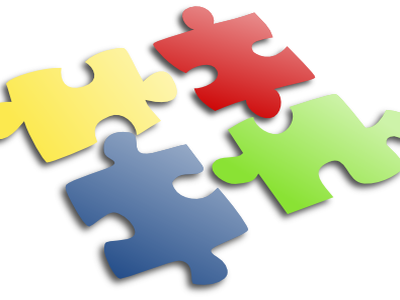
Naturally, you need to start with the Clients module. This is the most expected unit, which includes the subsection Contacts. The whole difference between them is that the Customer is an organization, and Contact is a person in this organization. In different CRM, this block is implemented differently, someone has more data, someone has less. In the course of operation, we identified a number of needs, which we met in our CRM. First, these are different types of list display. I'm not talking about word searches or selections on the first letter of the alphabet. I'm talking about a custom view for any criteria.
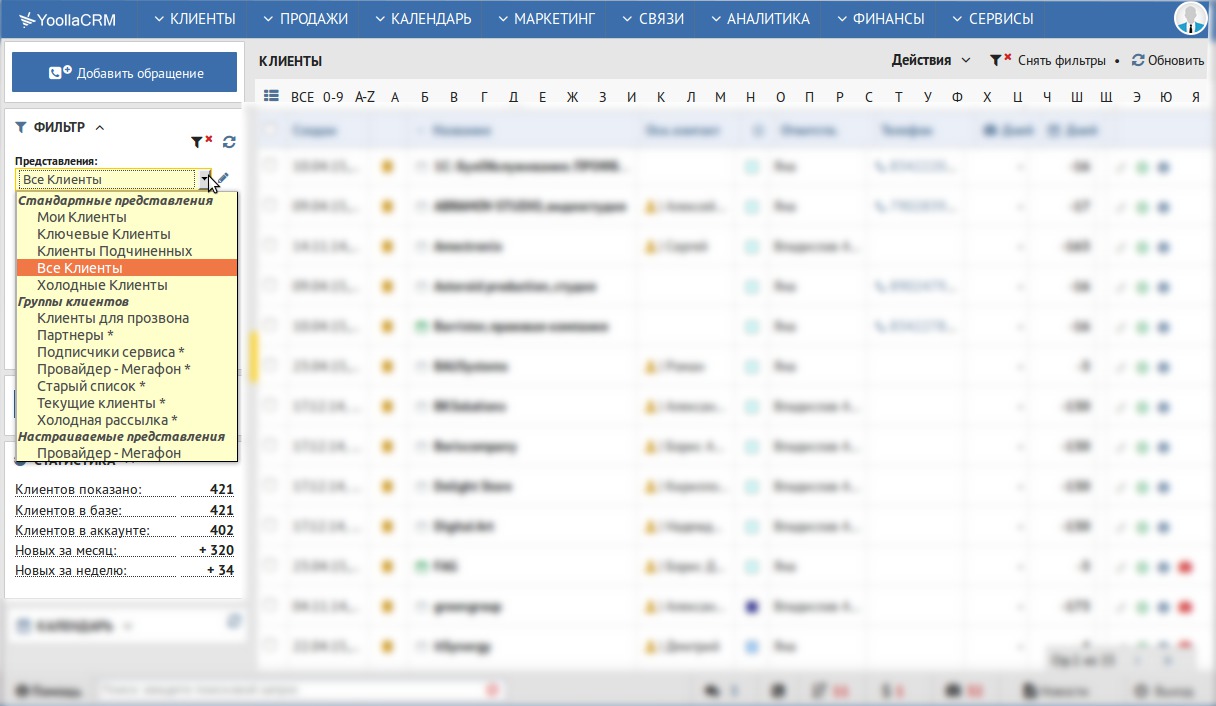
The second is quick access to customer data. Without opening cards and tedious transitions. Right there, in the same window. Of course, you can open a full-fledged page with all the data, but often basic data is required: last name, phone number, address, subject of the last contact. Quick and easy. Naturally, CRM has the ability to import and export Clients and Contacts. In addition, it is worth mentioning the possibility of group management of Clients. It is an opportunity to transfer them from one manager to another, or change their territorial affiliation or simply delete them.
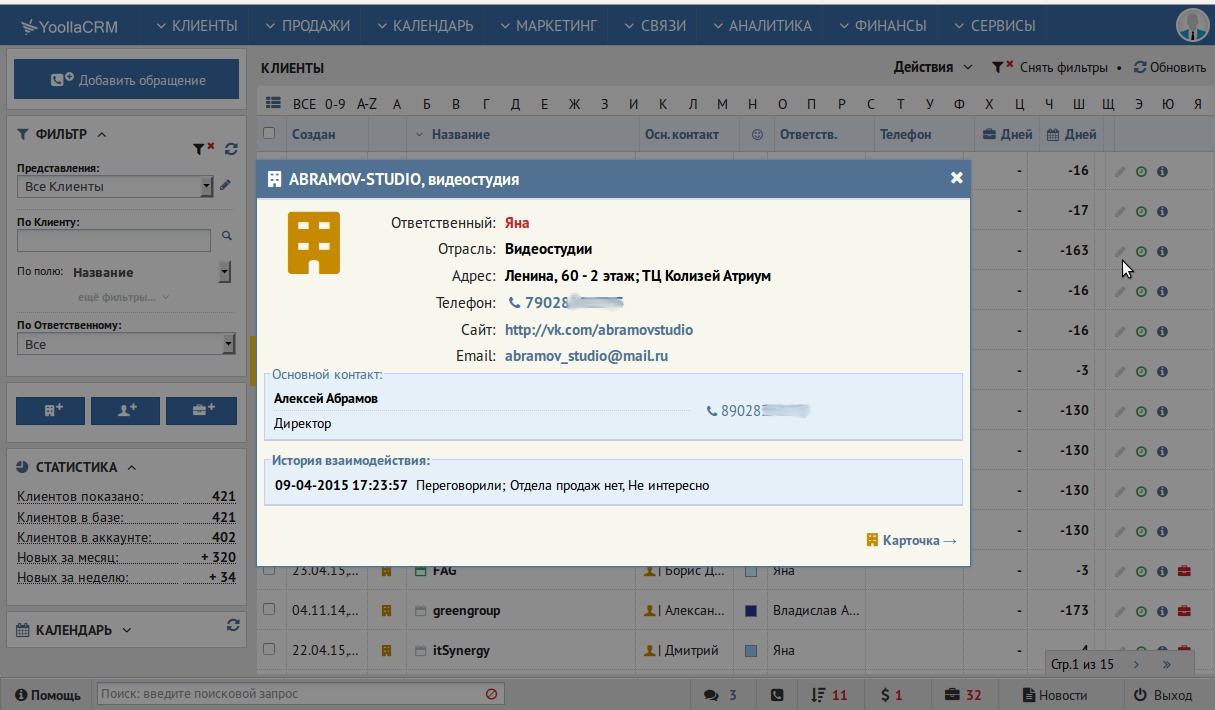
You can evaluate all the other “joys” in the demo version of the site, there is no need to write about them here. And we will move further along the logical chain. The logical block resulting from Clients is the Calendar. In it, you can schedule meetings, calls, send emails and other events. All the activity of your staff will remain in history, and all their plans will be in full view. An interesting highlight is the plan for the day. Not only does it go in the form of a letter in the morning to your email, it can also be imported into the Google Calendar and remind you on your smartphone of business. And for very careful it is possible to print a diary sheet for subsequent control already on paper. The calendar is almost always on the screen. Look at the previous screen. See the bottom left below? At the click, it will unfold in your usual calendar.
')
Another logical block is derived from Clients - this is the Transaction block. It is a Deal that is what we want from any of our Clients. For her, we conduct our activities. The transaction block also has a very informative structure. The transactions, the dates of their creation, the expected amounts, the stage of the transaction, the counterparty, the responsible employee, etc. are clearly displayed here. Again, by clicking on a deal, we get the quintessence of information on it. And, of course, it is easy to go to the full transaction section with all the information. We have been working with this unit for a long time and it has received interesting functions from us. For example, “Checkpoint”. In addition to the stages of the transaction, you can always assign control points, which will “loom” for you if they are not fulfilled within the appointed time. These are not just events that the manager himself has appointed, this is a system installation that tells the employee about the next “move”. When you skip such a point, the deal begins to “hurt”. She blushes and then the manager on the list of current deals notices her “unhealthy” look. Thus, an employee cannot “abandon” a transaction, for example, by sending a control and forgetting (or scoring) to take further actions.
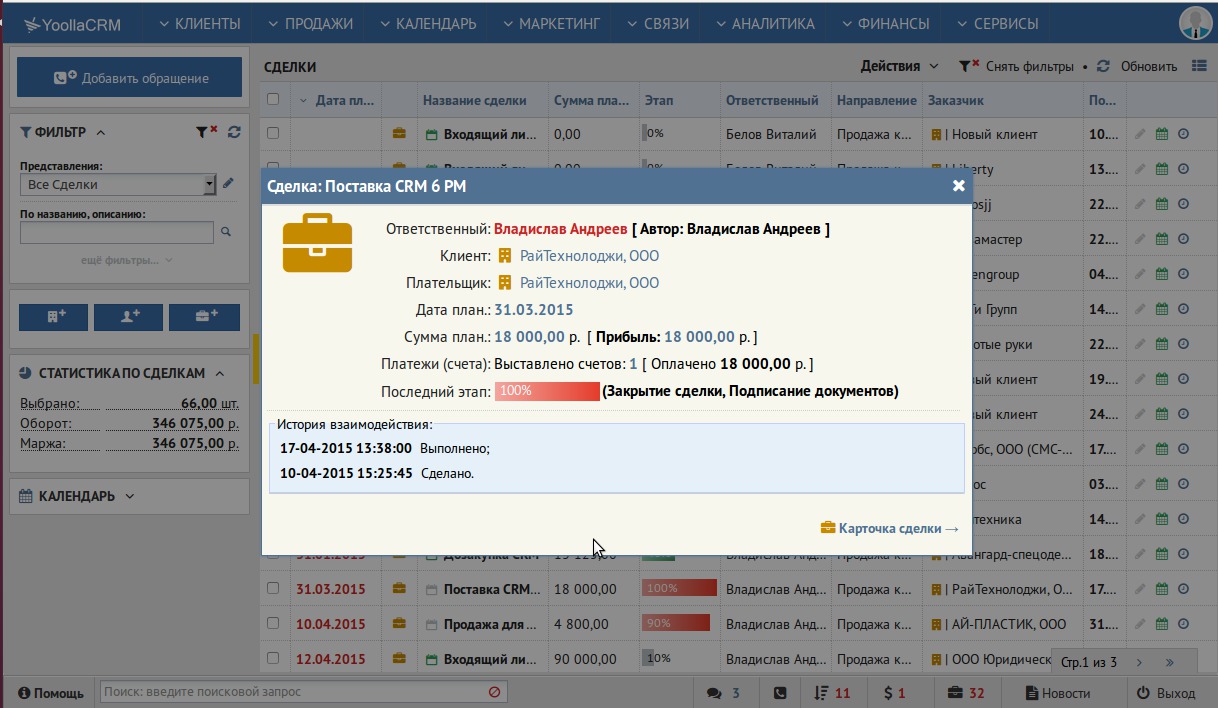
From the Transaction block, we logically move to the Documents block. All actions between counterparties are accompanied by a variety of documents. We have not forgotten about it. And for convenience, we have prepared a block in which you can prepare pre-formed templates for ANY documents in general (even a personalized bible) in DOC format, with variables inserted into it. And when this document is written out in CRM, the variables will be replaced with real data. Thus, employees in 1 click will form a contract, specification, invoice or additional agreement. The end of errors and corrections in the documentation has come! Stand alone account. They have the status of paid or not. Have the date of issuance and the date of payment, as well as binding to the transaction. Everything is simple and logical.
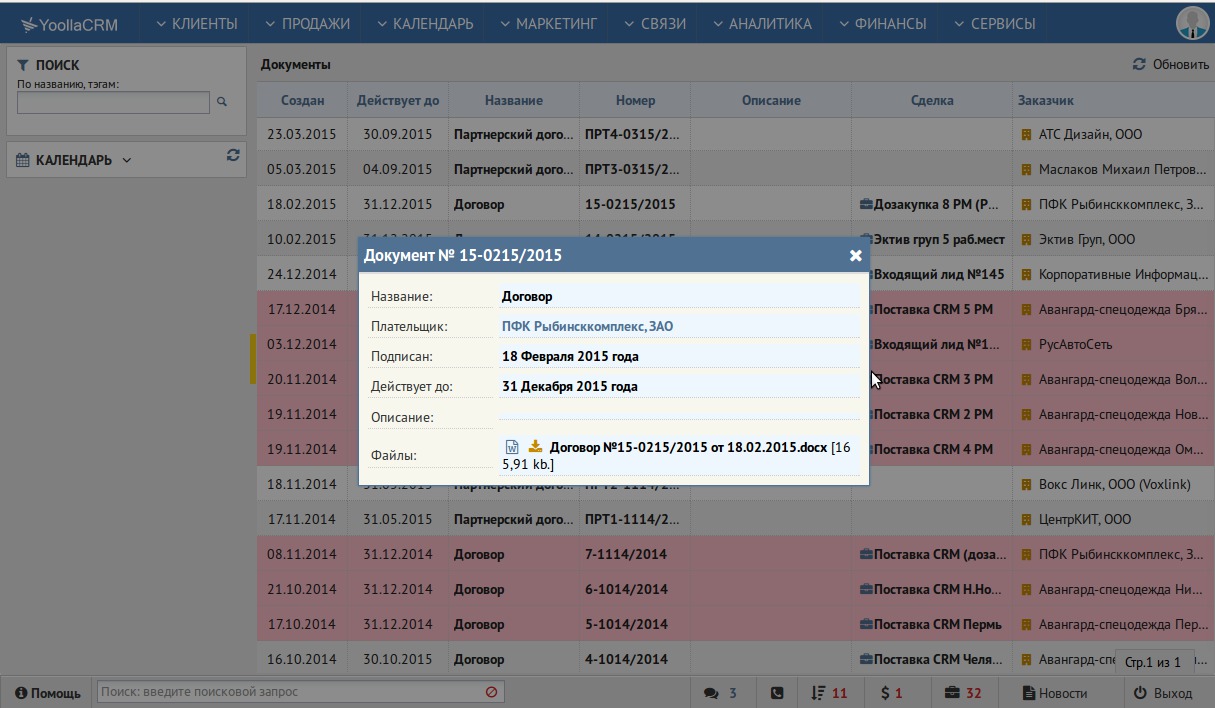
From the Documents block we smoothly flow into 2 most interesting blocks - Finance and Analytics. Not many CRMs can boast of having financial planning. In YoollaCRM is. This block allows you to reduce costs and revenues into a single table and visually display on the chart. This unit allows you to plan expenses for office, staff, advertising, suppliers. And also see the planned income and the results of the work on the results for the month. It is always nice to see a schedule of work results above 0.

Another powerful unit is YoollaCRM - analytics. There are more than 50 of them in our system. Analytics is the end point of the logical chain from the search for the Client to the closing of the Transaction. The manager is very important to understand how to work most efficiently. Who is most effective and why? How to make staff work more productive? What tools bring the most bang for your buck? Answers to all these questions gives the analyst. In our system, there are more than 50 reports on all business activities: from the number of sent letters to the amount of bills, from the number of transactions to the average length of a call.
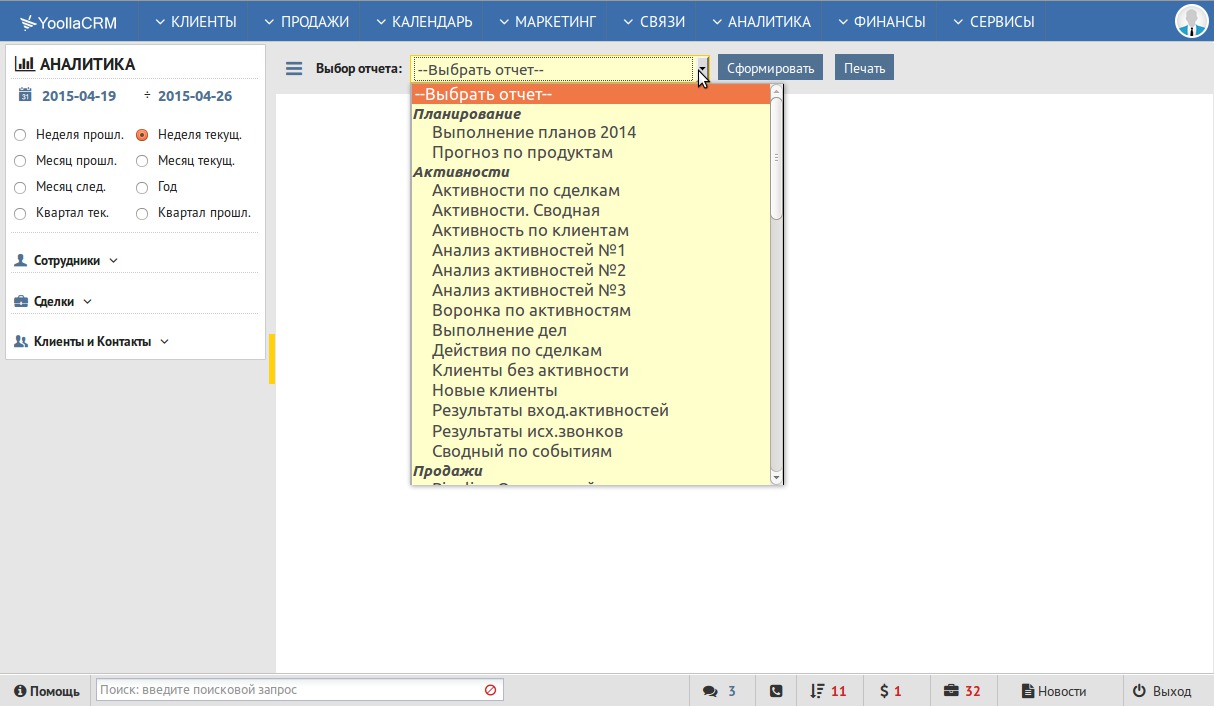
This could be the end of a general description of the largest blocks of the system. BUT! For sweets, we cooked SUPERBLOCK. It combines all information into a single unit. In the form of graphs and tables. This is a dashboard. This squeeze the entire work of the company. This is what the supervisor sees when entering CRM. One glance - and he understands the whole situation in the organization. All payments, transactions, contacts, bills, account balances, execution of plans, etc.

Here, in brief, and the whole excursus on the main blocks of the system. Outside the scope of this review were such auxiliary units as lead collector, product catalog, marketing tools, knowledge base, discussions, work with the price list and shared files. But even without the description of these blocks, YoollaCRM works as a harmonious and harmonious family and performs the functions assigned to it with high efficiency, convenience and comfort. Try it and see for yourself.

Naturally, you need to start with the Clients module. This is the most expected unit, which includes the subsection Contacts. The whole difference between them is that the Customer is an organization, and Contact is a person in this organization. In different CRM, this block is implemented differently, someone has more data, someone has less. In the course of operation, we identified a number of needs, which we met in our CRM. First, these are different types of list display. I'm not talking about word searches or selections on the first letter of the alphabet. I'm talking about a custom view for any criteria.

The second is quick access to customer data. Without opening cards and tedious transitions. Right there, in the same window. Of course, you can open a full-fledged page with all the data, but often basic data is required: last name, phone number, address, subject of the last contact. Quick and easy. Naturally, CRM has the ability to import and export Clients and Contacts. In addition, it is worth mentioning the possibility of group management of Clients. It is an opportunity to transfer them from one manager to another, or change their territorial affiliation or simply delete them.

You can evaluate all the other “joys” in the demo version of the site, there is no need to write about them here. And we will move further along the logical chain. The logical block resulting from Clients is the Calendar. In it, you can schedule meetings, calls, send emails and other events. All the activity of your staff will remain in history, and all their plans will be in full view. An interesting highlight is the plan for the day. Not only does it go in the form of a letter in the morning to your email, it can also be imported into the Google Calendar and remind you on your smartphone of business. And for very careful it is possible to print a diary sheet for subsequent control already on paper. The calendar is almost always on the screen. Look at the previous screen. See the bottom left below? At the click, it will unfold in your usual calendar.
')
Another logical block is derived from Clients - this is the Transaction block. It is a Deal that is what we want from any of our Clients. For her, we conduct our activities. The transaction block also has a very informative structure. The transactions, the dates of their creation, the expected amounts, the stage of the transaction, the counterparty, the responsible employee, etc. are clearly displayed here. Again, by clicking on a deal, we get the quintessence of information on it. And, of course, it is easy to go to the full transaction section with all the information. We have been working with this unit for a long time and it has received interesting functions from us. For example, “Checkpoint”. In addition to the stages of the transaction, you can always assign control points, which will “loom” for you if they are not fulfilled within the appointed time. These are not just events that the manager himself has appointed, this is a system installation that tells the employee about the next “move”. When you skip such a point, the deal begins to “hurt”. She blushes and then the manager on the list of current deals notices her “unhealthy” look. Thus, an employee cannot “abandon” a transaction, for example, by sending a control and forgetting (or scoring) to take further actions.

From the Transaction block, we logically move to the Documents block. All actions between counterparties are accompanied by a variety of documents. We have not forgotten about it. And for convenience, we have prepared a block in which you can prepare pre-formed templates for ANY documents in general (even a personalized bible) in DOC format, with variables inserted into it. And when this document is written out in CRM, the variables will be replaced with real data. Thus, employees in 1 click will form a contract, specification, invoice or additional agreement. The end of errors and corrections in the documentation has come! Stand alone account. They have the status of paid or not. Have the date of issuance and the date of payment, as well as binding to the transaction. Everything is simple and logical.

From the Documents block we smoothly flow into 2 most interesting blocks - Finance and Analytics. Not many CRMs can boast of having financial planning. In YoollaCRM is. This block allows you to reduce costs and revenues into a single table and visually display on the chart. This unit allows you to plan expenses for office, staff, advertising, suppliers. And also see the planned income and the results of the work on the results for the month. It is always nice to see a schedule of work results above 0.

Another powerful unit is YoollaCRM - analytics. There are more than 50 of them in our system. Analytics is the end point of the logical chain from the search for the Client to the closing of the Transaction. The manager is very important to understand how to work most efficiently. Who is most effective and why? How to make staff work more productive? What tools bring the most bang for your buck? Answers to all these questions gives the analyst. In our system, there are more than 50 reports on all business activities: from the number of sent letters to the amount of bills, from the number of transactions to the average length of a call.

This could be the end of a general description of the largest blocks of the system. BUT! For sweets, we cooked SUPERBLOCK. It combines all information into a single unit. In the form of graphs and tables. This is a dashboard. This squeeze the entire work of the company. This is what the supervisor sees when entering CRM. One glance - and he understands the whole situation in the organization. All payments, transactions, contacts, bills, account balances, execution of plans, etc.

Here, in brief, and the whole excursus on the main blocks of the system. Outside the scope of this review were such auxiliary units as lead collector, product catalog, marketing tools, knowledge base, discussions, work with the price list and shared files. But even without the description of these blocks, YoollaCRM works as a harmonious and harmonious family and performs the functions assigned to it with high efficiency, convenience and comfort. Try it and see for yourself.
Source: https://habr.com/ru/post/291854/
All Articles